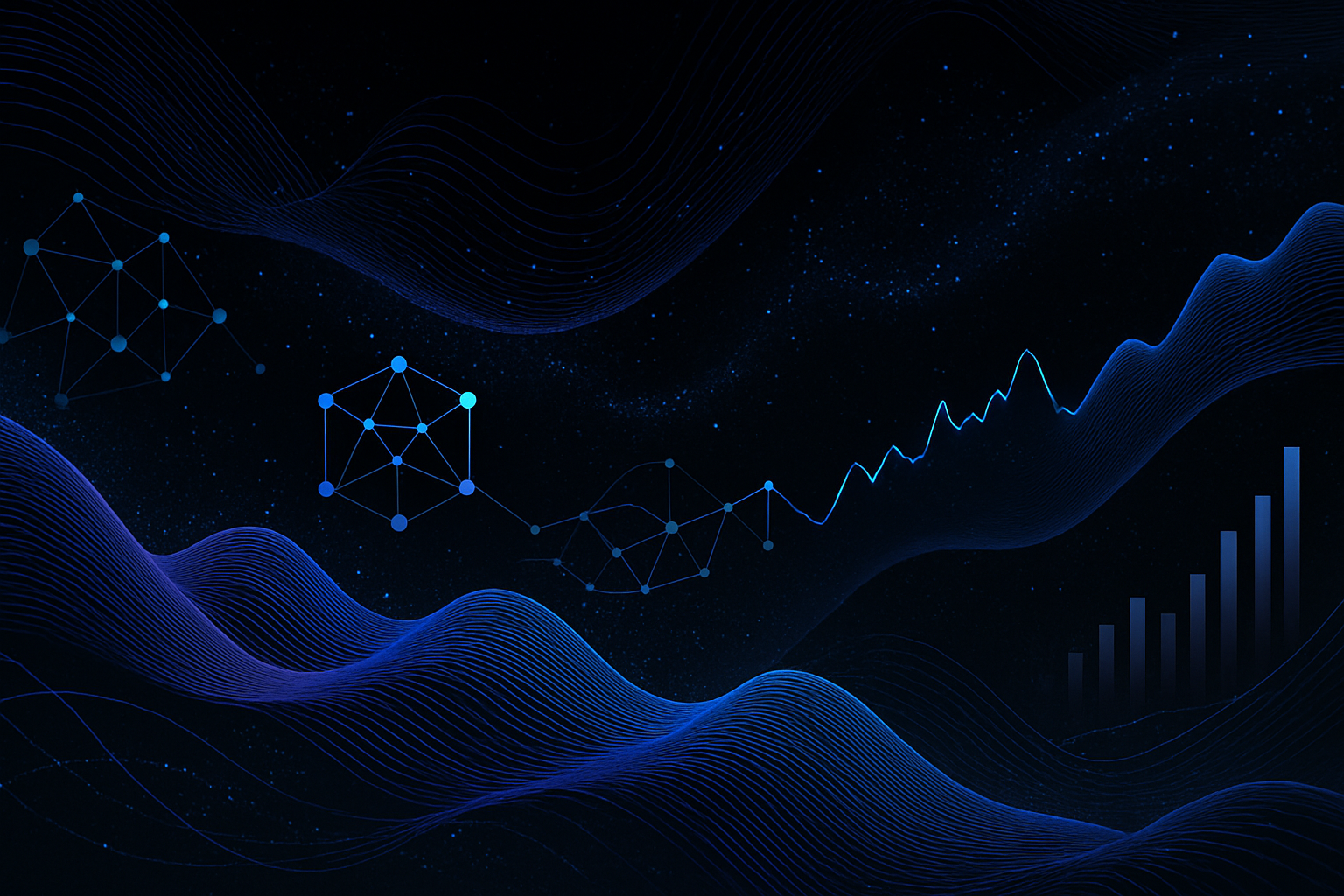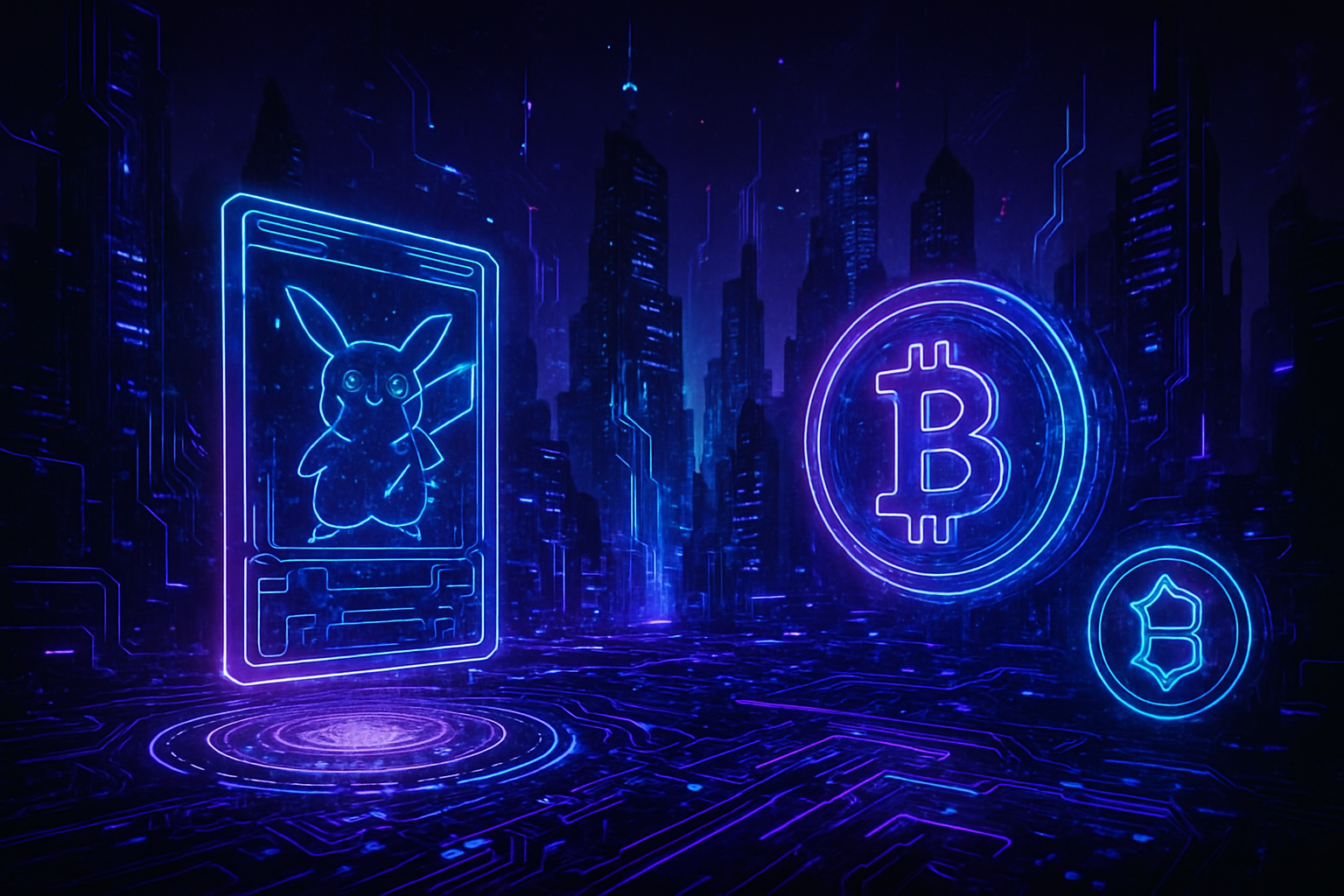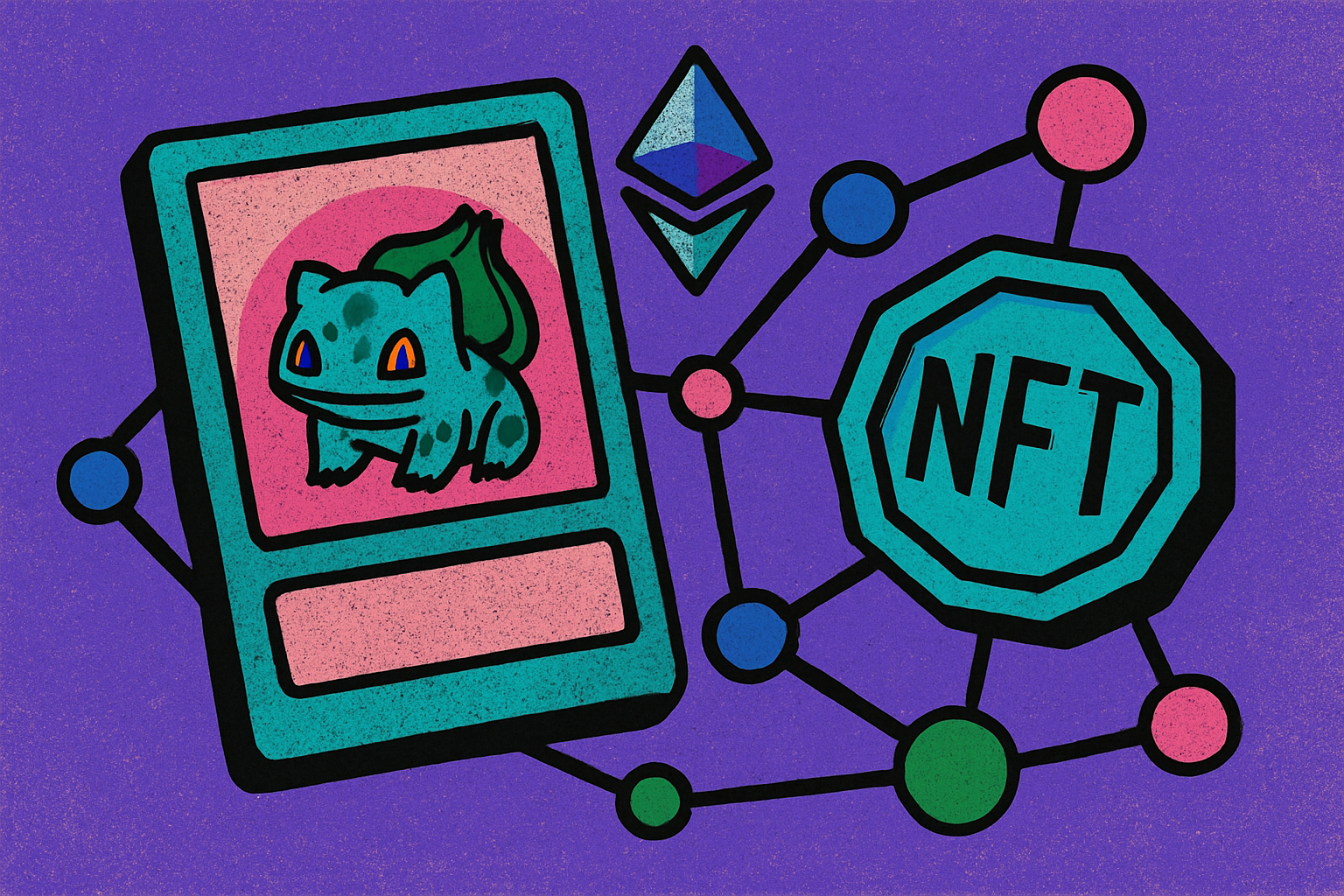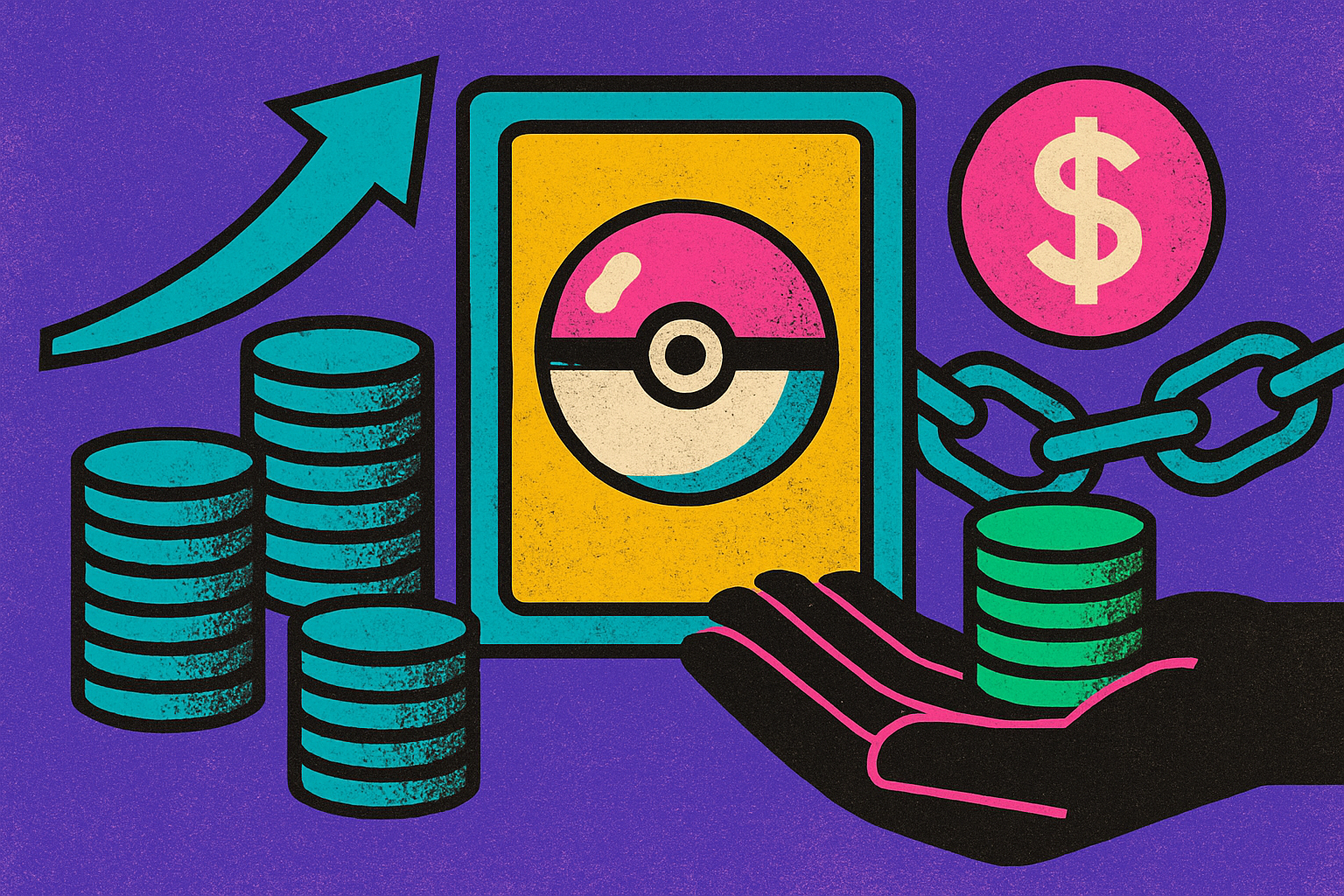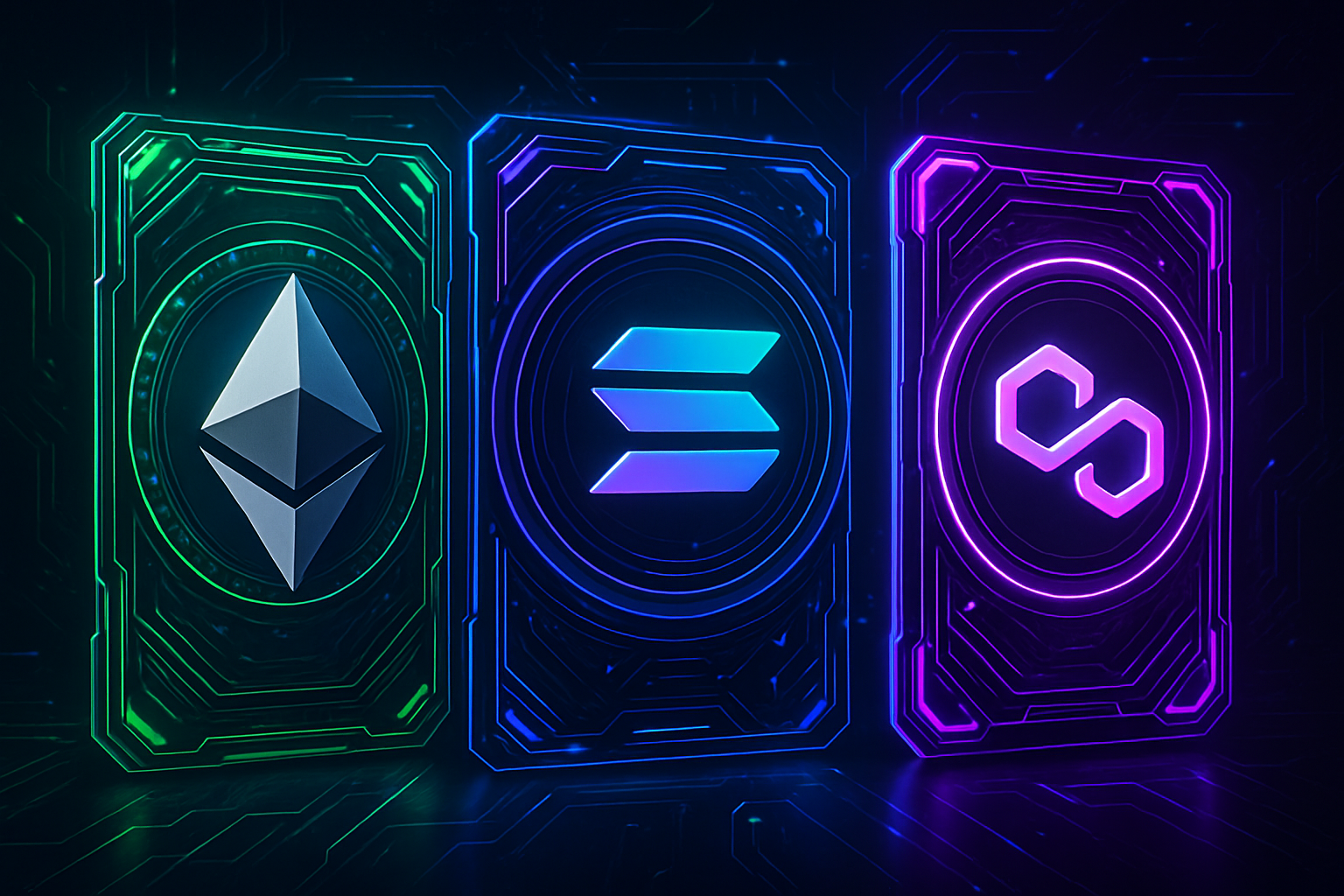
Trading cards have always been about scarcity, provenance, and community. In 2025, the intersection of blockchain technology and real-world assets (RWAs) is reshaping how collectors own, trade, and authenticate prized Pokémon, Magic: The Gathering, and other collectible cards. As tokenization platforms like tcgonchain. com make it possible to bridge physical cards with NFT and RWA tokens, choosing the right blockchain is now a critical decision for collectors and investors alike.
Three blockchains are leading the charge for trading card RWAs: Ethereum, Solana, and Polygon. Each offers a unique blend of transaction speed, cost structure, security assurances, and ecosystem maturity. Let’s break down how these networks compare for anyone looking to tokenize or invest in trading card collectibles on-chain.
Ethereum: Security and Ecosystem Depth at $4,472.87
Ethereum remains the gold standard for asset tokenization thanks to its robust security model and extensive developer ecosystem. As of September 20,2025, Ethereum (ETH) is priced at $4,472.87. Its support for both NFTs (unique digital representations) and RWA tokens (digitized forms of physical assets) empowers projects like Centrifuge and RealT to bring everything from invoices to real estate – and now trading cards – onto the blockchain.
The main trade-off? Transaction costs. While Ethereum’s network is highly secure and decentralized – making it a trusted option for high-value collectibles – gas fees can spike during periods of congestion. For some collectors or frequent traders on NFT marketplaces, these fees may eat into profits or deter lower-value trades.
“NFTs shine when it comes to representing one-of-a-kind digital items, while RWA tokens are great for turning physical assets into digital forms. “
– Source: RWA. io
Solana: Speed and Affordability at $238.67
If rapid-fire trading or ultra-low fees are your priority, Solana stands out. With a current price of $238.67, Solana processes upwards of 1,000 real transactions per second (TPS), dwarfing Ethereum’s 15-30 TPS range (source). Fees typically clock in at less than $0.01 per transaction – a game-changer for those flipping cards or running high-volume auctions.
This performance has attracted projects like Ondo Finance that leverage Solana’s speed to make asset-backed tokens accessible to retail users worldwide. However, Solana has experienced network outages in the past; while improvements continue apace, some collectors may weigh reliability against cost savings when storing higher-value assets on-chain.
Polygon: Bridging Affordability with Ethereum Compatibility
Polygon, an Ethereum scaling solution often referred to as a Layer 2 network or sidechain, offers another compelling choice for trading card RWAs. Polygon’s architecture enables it to inherit much of Ethereum’s security model while delivering much lower transaction costs – typically just fractions of a cent per transfer.
This makes Polygon especially attractive for micro-transactions or onboarding new collectors who might balk at high gas fees elsewhere. Its compatibility with Ethereum means that many dApps and marketplaces supporting ERC-721/1155 standards can easily integrate Polygon-based assets without major technical overhauls.
6-Month Price Comparison: Top Blockchains for Trading Card RWAs
Current and historical price performance of leading blockchain assets relevant to RWA tokenization (as of September 20, 2025)
| Asset | Current Price | 6 Months Ago | Price Change |
|---|---|---|---|
| Ethereum (ETH) | $4,472.87 | $3,188.43 | +40.3% |
| Solana (SOL) | $238.67 | $239.57 | -0.3% |
| Polygon (MATIC) | $0.2145 | $0.2512 | +17.1% |
Analysis Summary
Ethereum (ETH) has shown the strongest 6-month growth among the compared assets, rising by 40.3%. Polygon (MATIC) also posted a solid gain of 17.1%, while Solana (SOL) remained nearly flat with a slight decrease of 0.3%. This highlights Ethereum’s continued market leadership and momentum in the RWA sector, with Polygon showing resilience and Solana maintaining stability.
Key Insights
- Ethereum leads with a significant 40.3% price increase over the past 6 months, reflecting strong investor confidence and ecosystem growth.
- Polygon (MATIC) demonstrated positive performance with a 17.1% gain, indicating ongoing adoption and utility in the RWA and DeFi space.
- Solana’s price remained stable, with only a minor 0.3% decrease, suggesting market consolidation after previous periods of high volatility.
This comparison uses real-time market data for current and 6-month historical prices, as provided from CoinMarketCap and related sources. All figures are directly sourced and calculated based on the exact data points supplied.
Data Sources:
- Main Asset: https://coinmarketcap.com/academy/article/2e66b1a4-05f7-47fc-804f-237ed57b5061
- Solana: https://coinmarketcap.com/academy/article/2e66b1a4-05f7-47fc-804f-237ed57b5061
- Polygon: https://coinmarketcap.com/academy/article/25afcf15-06b2-484e-a733-5cd524947985
- Bitcoin: https://coinmarketcap.com/academy/article/2e66b1a4-05f7-47fc-804f-237ed57b5061
- BNB (Binance Coin): https://coinmarketcap.com/academy/article/25afcf15-06b2-484e-a733-5cd524947985
- Avalanche: https://coinmarketcap.com/watchlist/60b3a76344d382b340a14c3d/
- Cardano: https://coinmarketcap.com/academy/article/25afcf15-06b2-484e-a733-5cd524947985
- Aptos: https://coinmarketcap.com/
Disclaimer: Cryptocurrency prices are highly volatile and subject to market fluctuations. The data presented is for informational purposes only and should not be considered as investment advice. Always do your own research before making investment decisions.
Ethereum (ETH) Price Prediction 2026-2031
Comprehensive year-over-year outlook based on market trends, RWA adoption, and blockchain competition. All prices in USD.
| Year | Minimum Price | Average Price | Maximum Price | % Change (Avg vs. Prev Year) | Key Market Scenario |
|---|---|---|---|---|---|
| 2026 | $3,900 | $5,200 | $6,200 | +16.3% | Continued RWA adoption; moderate regulatory clarity |
| 2027 | $4,400 | $5,900 | $7,500 | +13.5% | Ethereum upgrades improve scalability; competition with Solana intensifies |
| 2028 | $4,800 | $6,700 | $8,900 | +13.6% | Mainstream RWA tokenization; institutional inflows increase |
| 2029 | $5,200 | $7,600 | $10,300 | +13.4% | Macro bull market; ETH ETFs gain traction |
| 2030 | $5,700 | $8,700 | $12,000 | +14.5% | Major RWA platforms built on ETH; regulatory tailwinds |
| 2031 | $6,200 | $9,900 | $13,800 | +13.8% | ETH cements dominance in RWA sector; network effects peak |
Price Prediction Summary
Ethereum is expected to see steady growth from 2026 to 2031, driven by increasing adoption of real-world asset (RWA) tokenization, continuous technological upgrades, and expanding institutional participation. Price volatility remains, but the overall trend is upward, with the average price nearly doubling over the period. Both bullish and bearish scenarios are accounted for, reflecting uncertainty in global markets and blockchain competition.
Key Factors Affecting Ethereum Price
- RWA tokenization adoption on Ethereum and competing chains
- Ethereum scalability and network upgrades (e.g., Danksharding, Layer 2 adoption)
- Regulatory clarity for digital assets and tokenized securities
- Institutional investment and ETH ETF approvals
- Competition from Solana, Polygon, and emerging L1/L2s
- Macroeconomic cycles and global crypto sentiment
- Security and decentralization advantages supporting trust in Ethereum
Disclaimer: Cryptocurrency price predictions are speculative and based on current market analysis.
Actual prices may vary significantly due to market volatility, regulatory changes, and other factors.
Always do your own research before making investment decisions.
NFTs vs RWA Tokens: What Matters Most for Collectors?
The distinction between NFTs and RWA tokens is crucial when evaluating these blockchains’ suitability for trading card projects (source). NFTs excel at certifying one-of-a-kind digital collectibles, think original Pokémon artwork or unique Magic promo cards, while RWA tokens unlock liquidity by digitizing ownership shares in physical cards themselves.
For collectors and investors, the blockchain choice often comes down to the specific goals of their trading card journey. If your focus is on unique, digital-only collectibles or high-value physical cards demanding maximum security, Ethereum’s established ecosystem and deep liquidity pools offer reassurance, albeit at a premium cost. Those seeking to rapidly trade lower-value cards or experiment with fractionalized ownership may find Solana’s speed and negligible fees more appealing, especially given its growing roster of RWA projects.
Polygon, meanwhile, carves out a middle path for trading card RWAs. Its Ethereum compatibility ensures broad marketplace access and easy bridging of assets between Layer 1 and Layer 2, while its low costs make it ideal for onboarding newcomers or running frequent micro-transactions, think daily Pokémon pack breaks or Magic: The Gathering flash auctions. Polygon’s adoption by major NFT platforms has also made it a go-to for projects that want to tap into the Ethereum collector base without pricing out smaller traders.
Pros and Cons of Top Blockchains for Trading Card RWA Tokenization
-
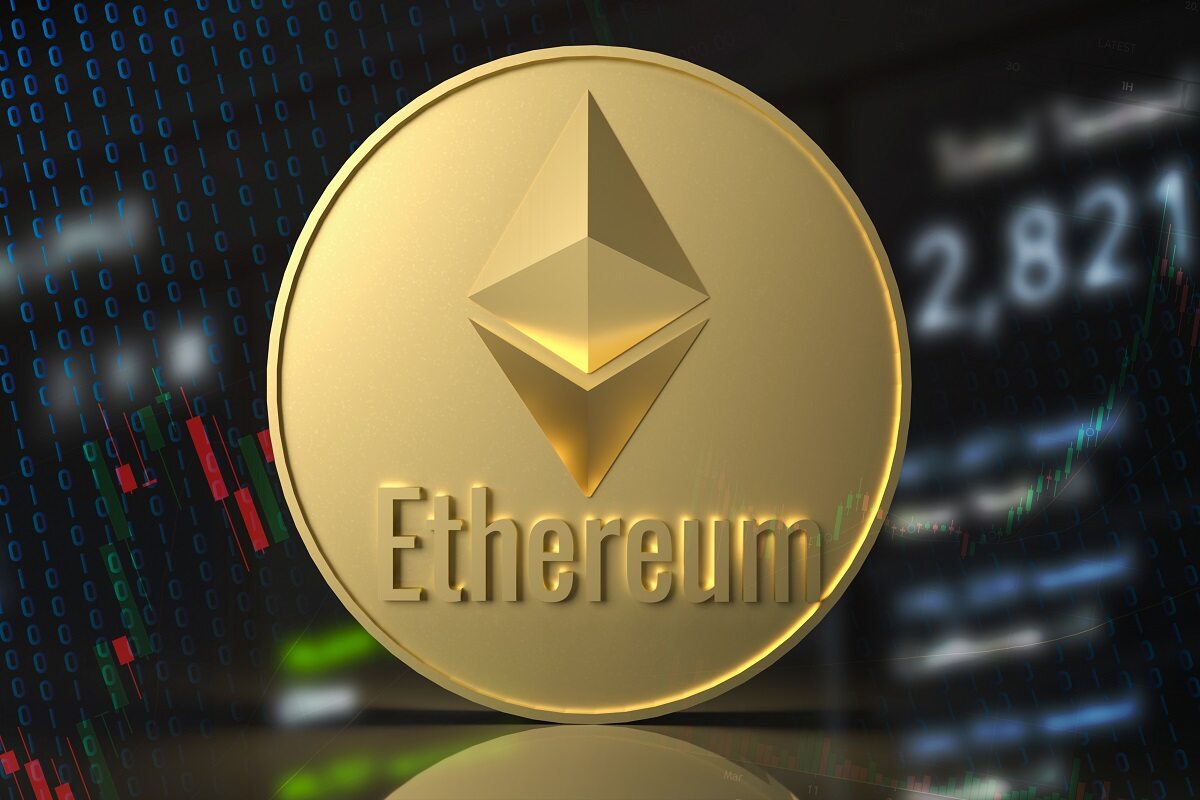
Ethereum: Pros: Industry-leading security, decentralization, and a mature ecosystem with extensive developer support. Widely adopted for RWA tokenization by platforms like Centrifuge and RealT. Cons: Higher gas fees—especially during network congestion—and lower transaction throughput (15–30 TPS) can limit scalability for high-volume trading card projects.
-
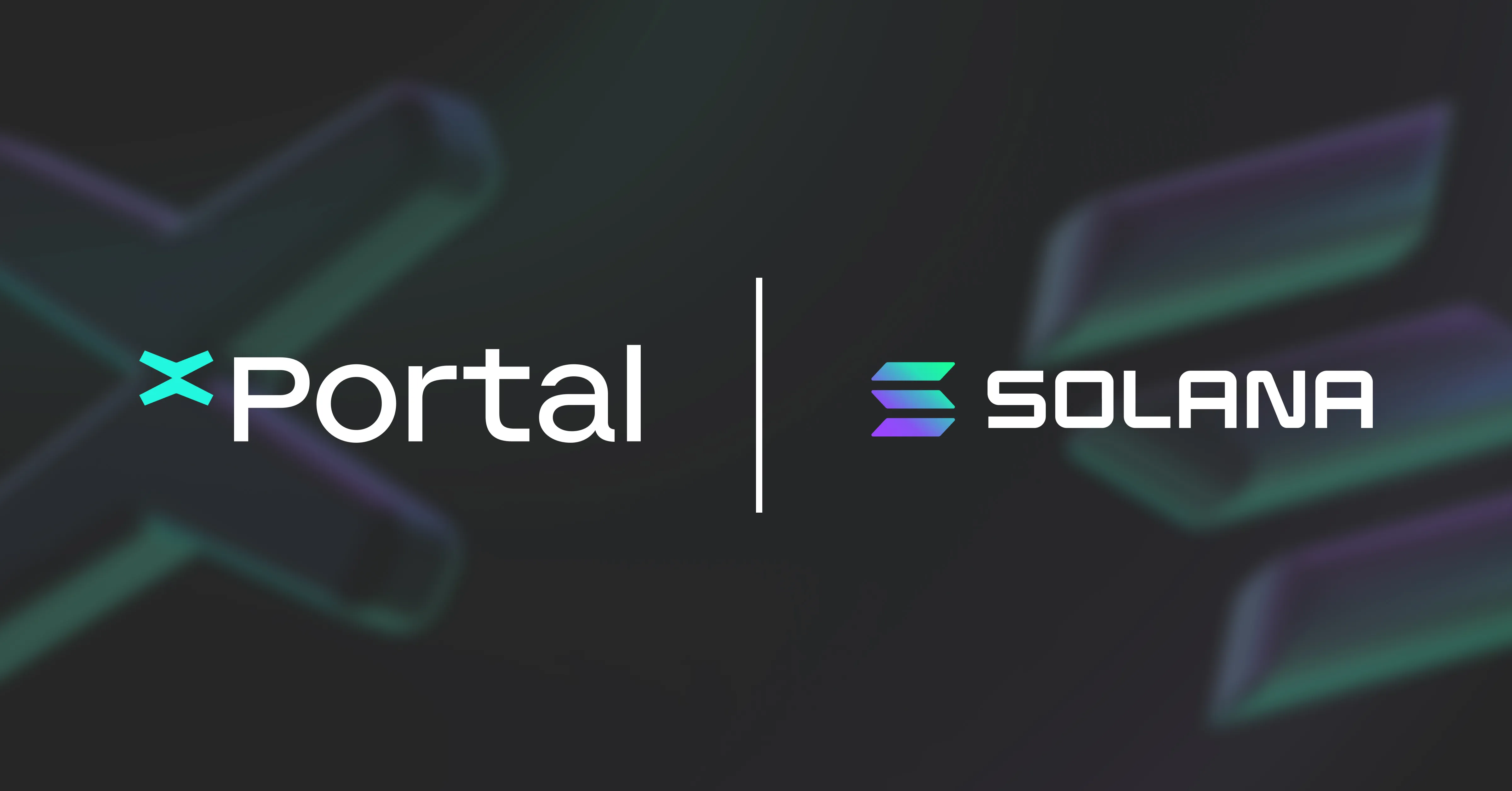
Solana: Pros: High transaction speed (over 1,000 TPS) and extremely low fees (often less than $0.01), making it ideal for real-time trading card transactions. Growing ecosystem with projects like Ondo Finance leveraging its speed. Cons: Has experienced network outages, raising concerns about long-term reliability and security compared to Ethereum.
-
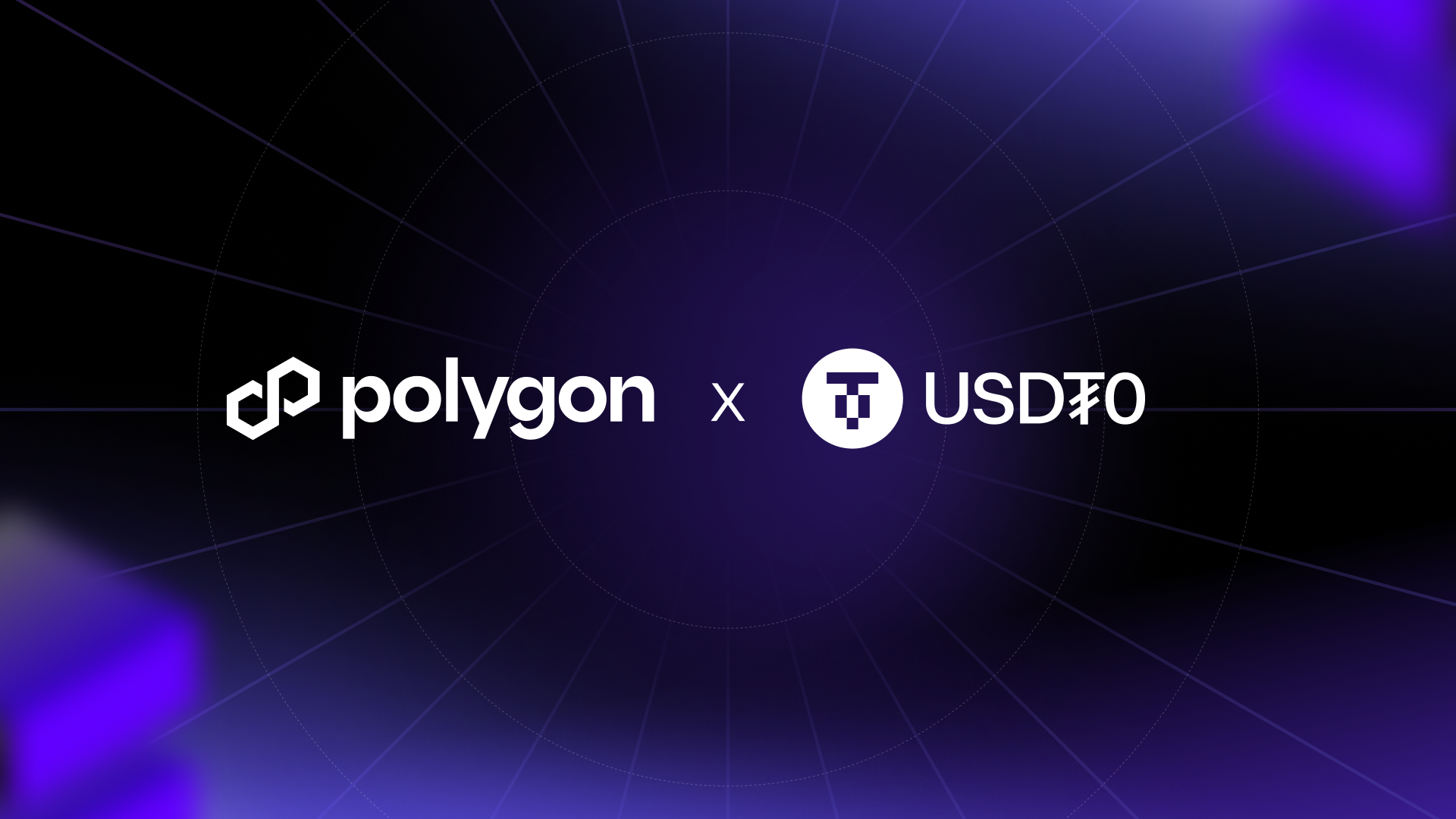
Polygon: Pros: Built as a layer-2 scaling solution for Ethereum, Polygon offers fast, low-cost transactions and is compatible with Ethereum’s ecosystem. Popular among NFT marketplaces and trading card projects for its efficiency. Cons: As a secondary network, Polygon’s security ultimately relies on Ethereum, and it may face occasional congestion as adoption increases.
Current Market Leadership: How Collectors Are Voting With Their Wallets
The real-world performance of these blockchains is reflected in their adoption across leading NFT marketplaces and RWA platforms. According to DappRadar’s rankings, Ethereum remains dominant in total trading volume but faces stiff competition from Solana’s surging activity in affordable collectibles. Polygon continues to expand its share by enabling seamless cross-chain experiences for both creators and buyers.
A quick glance at CoinGecko’s top Trading Card RWA Platform coins shows how all three networks are capturing value as more projects tokenize everything from vintage Charizards to graded Black Lotus cards. As institutional interest grows, highlighted by recent coverage from Coin Bureau, expect even greater innovation in how RWAs are packaged, traded, and authenticated on-chain.
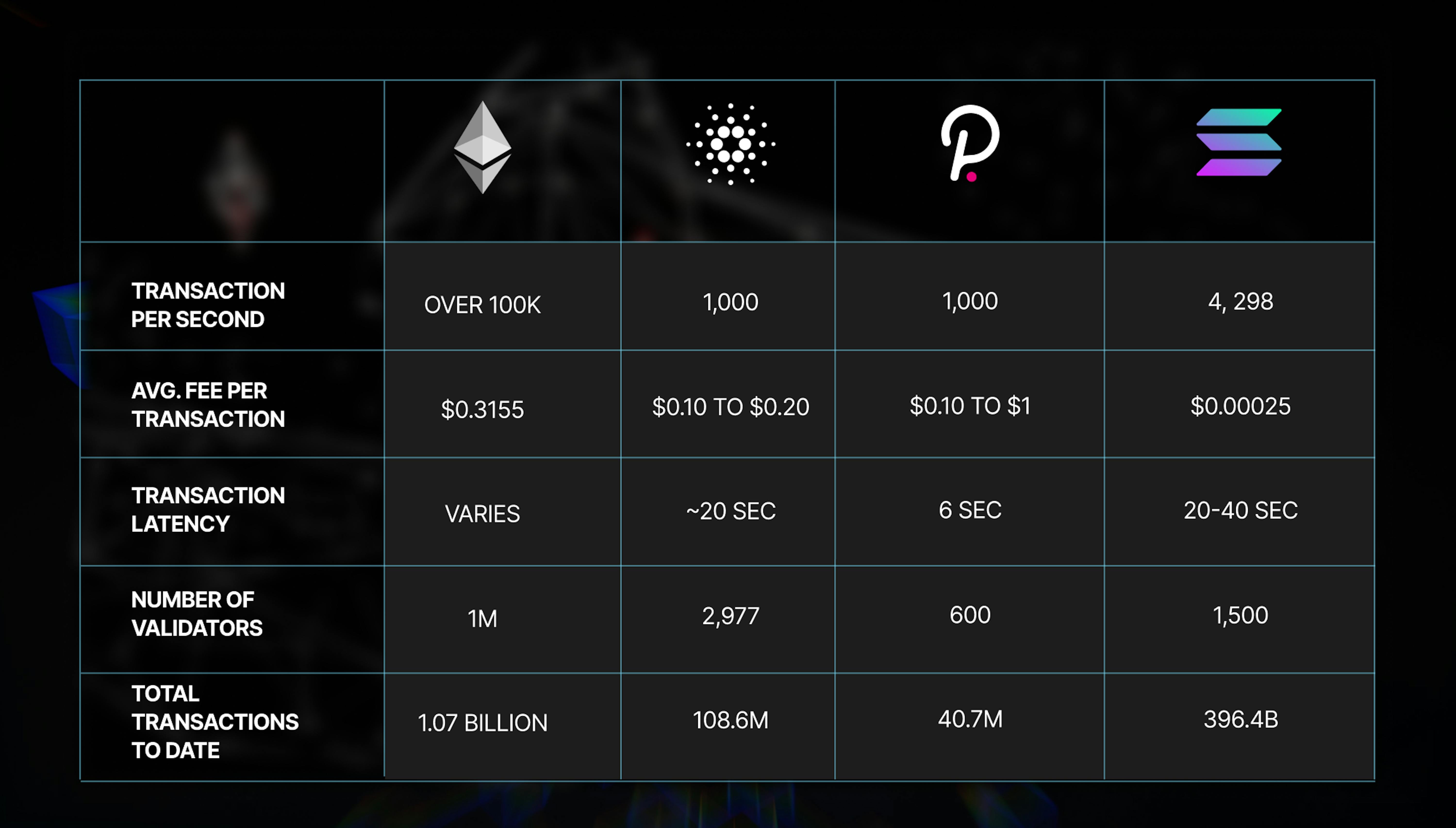
Choosing the Right Blockchain: Key Takeaways for Collectors
No single blockchain is perfect for every use case. Here’s what savvy collectors should consider:
- Security and Provenance: For irreplaceable grails or high-value cards, Ethereum’s battle-tested infrastructure remains unmatched.
- Speed and Cost: Solana excels where affordability and transaction volume matter most, but reliability should be monitored as the network matures.
- Ecosystem Access: Polygon offers a practical blend of low fees and broad dApp compatibility, ideal for new entrants or those managing large collections with frequent trades.
The landscape will continue evolving as new scaling solutions emerge and regulatory clarity improves around tokenized RWAs. For now, platforms like tcgonchain. com empower collectors to navigate this diversity with confidence, bridging physical passion with digital innovation through secure blockchain rails.

